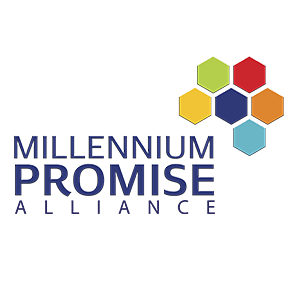FREQUENTLY ASKED QUESTIONS
FAQ: MILLENNIUM PROMISE ALLIANCE
- What happened to the MVP after 2015?
With basic systems firmly in place and increased focus on business development, forming cooperatives, and promoting off-farm employment through 2015, the project’s model predicts that incomes will generally increase in the villages. Higher incomes can in turn raise savings, thus accelerating economic diversification and investments in human capital. The resulting economic growth in the villages will reduce poverty and enable communities to finance a growing share of investments to achieve the MDGs.
- What did the MVP achieve?
The project has registered noticeable “quick wins,” especially in areas where national programs were nonexistent or lagging behind, such as improved crop yields thanks to subsidized seeds and fertilizers, malaria control through bed nets, and improved school enrollment with the help of school meal programs. Some successes stem from a combination of actions: improved yields, food security, diet diversity, and disease control have reduced stunting; and improved road networks, trained midwives, and new clinics have led to an increase in institutional deliveries.
-
What were the Millennium Villages?
Millennium Villages are designed to demonstrate how the Millennium Development Goals can be met in rural Africa over 10 years through integrated, community-led development at very low cost.
-
Who was involved in the MVP?
The MVP is a multi-stakeholder project spearheaded by the Earth Institute, Columbia University, where scientists and researchers are helping to bring the latest evidence, technology, and practices into the project; and Millennium Promise, which oversees project operations. The project relies heavily on local governments and community participation in planning and carrying out interventions. Local, regional, and national governments play a key role in selecting MV sites and implementing interventions.
-
How much did the MVP cost?
The MVP operates well within the budget envelope of official development assistance (ODA) pledged by world leaders at the G8 Gleneagles Summit and UN World Summit of 2005. The commitment to double aid to sub-Saharan Africa by 2010, en route to larger increases by 2015, works out to approximately $90 per African per year. The MVP operates within the donor budget envelope of $60 per person per year, with another $60 provided by local government, communities, and external partners.
FAQ: MILLENNIUM VILLAGES PROJECT
- What happened to the MVP after 2015?
With basic systems firmly in place and increased focus on business development, forming cooperatives, and promoting off-farm employment through 2015, the project’s model predicts that incomes will generally increase in the villages. Higher incomes can in turn raise savings, thus accelerating economic diversification and investments in human capital. The resulting economic growth in the villages will reduce poverty and enable communities to finance a growing share of investments to achieve the MDGs.
- What did the MVP achieve?
The project has registered noticeable “quick wins,” especially in areas where national programs were nonexistent or lagging behind, such as improved crop yields thanks to subsidized seeds and fertilizers, malaria control through bed nets, and improved school enrollment with the help of school meal programs. Some successes stem from a combination of actions: improved yields, food security, diet diversity, and disease control have reduced stunting; and improved road networks, trained midwives, and new clinics have led to an increase in institutional deliveries.
- What were the Millennium Villages?
Millennium Villages are designed to demonstrate how the Millennium Development Goals can be met in rural Africa over 10 years through integrated, community-led development at very low cost.
- Who was involved in the MVP?
The MVP is a multi-stakeholder project spearheaded by the Earth Institute, Columbia University, where scientists and researchers are helping to bring the latest evidence, technology, and practices into the project; and Millennium Promise, which oversees project operations. The project relies heavily on local governments and community participation in planning and carrying out interventions. Local, regional, and national governments play a key role in selecting MV sites and implementing interventions.
- How much did the MVP cost?
The MVP operates well within the budget envelope of official development assistance (ODA) pledged by world leaders at the G8 Gleneagles Summit and UN World Summit of 2005. The commitment to double aid to sub-Saharan Africa by 2010, en route to larger increases by 2015, works out to approximately $90 per African per year. The MVP operates within the donor budget envelope of $60 per person per year, with another $60 provided by local government, communities, and external partners.



